Opinion & Analysis
Blame the rules committee, not Tiger
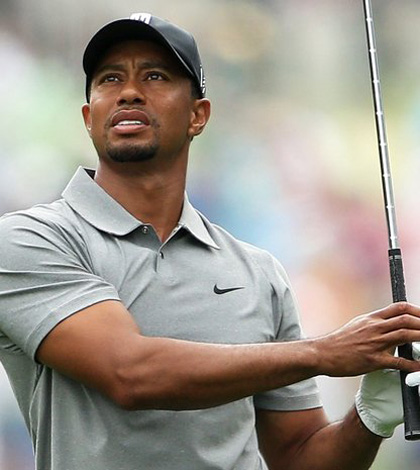
Moving Day at Augusta began with a bang on Saturday as news broke about Tiger Woods being assessed a two-shot penalty for an incorrect drop on No. 15 Friday after his ball struck the flagstick and spun backward into the water.
The unfortunate shot unleashed an explosion of opinion and controversy that resulted in the Masters rules committee making the correct decision not to disqualify Tiger from competition.
Keep in mind that it does not come down to whether Tiger broke a rule or not — he certainly did, and he has admitted it. It is simply the series of events and decisions made by the committee that would have made it unfair to Tiger for him to be disqualified.
So let’s start at the beginning:
Being a water hazard (not lateral) Tiger had four options he could exercise under Rule 26-1:
- Play the ball as it lies, which was not possible because it was submerged in water.
- Take a one-shot penalty and drop his ball in the drop zone at the left side of the fairway toward the grandstand.
- Drop a ball behind the water hazard, keeping the point at which the original ball last crossed the margin of the water hazard directly between the hole and the spot on which the ball is dropped, with no limit to how far behind the water hazard the ball may be dropped.
- Proceed under the stroke and distance provision of Rule 27-1 by playing a ball as nearly as possible at the spot from which the original ball was last played.
Tiger attempted to exercise the fourth option and drop where he hit the prior shot from. At the time, it seemed as though Tiger had proceeded correctly. Between the time that he dropped his ball and the end of his round, the Masters rules committee received a call from a viewer prompting it to reexamine how Tiger proceeded at No. 15. At that time, the committee ruled that Tiger had proceeded correctly, and no penalty was issued.
Many are wondering where the rules official was during all of this. Surely the world’s No. 1 player must have an official with him at all times, right? Yes, pretty much. However, it is the responsibility of the player to call the official in to assist with procedural questions. Rules officials are essential silent observers unless called upon for a ruling, or they can prevent a rules infraction.
So why didn’t the official step in this time?
Since we never saw the official with Tiger short of the pond on No. 15, we can’t be sure. But I have to believe he was up near the green or drop area. From the perspective of the official some 85-plus yards away, those two yards back that Tiger dropped his ball had to look very near to the original spot where he hit from. Therefore there was no reason for him to step in.
In an interview after his round, Tiger stated that he purposely dropped his ball about two yards behind where he hit his original ball from, not knowing he had broken a Rule 26-1. Upon seeing the interview, the committee believed that the ruling warranted further discussion, and they asked Tiger to meet Saturday morning. It was during this meeting that it was deemed that Tiger had not proceeded correctly, and had played his ball from a wrong location.
Playing a ball from an incorrect location in stroke play competition is a two-stroke penalty. However, in Tiger’s case he had already signed his scorecard for a 71. Signing for an incorrect score in stroke play competition will usually result in a disqualification. So why was Tiger not disqualified?
Under Rule 33-7, “A penalty of disqualification may in exceptional individual cases be waived, modified or imposed if the Committee considers such action warranted.” To some, this rule might make it seem like the committee made an exception in Tiger’s case in order to keep the most exciting player in golf in the field for the weekend.
It did not.
Before Tiger finished his round on Friday, the committee had already reviewed what happened on No. 15 and ruled no penalty. Since the committee initially ruled that there was not penalty and thus facilitated the player into signing for an incorrect score, they enacted Rule 33-7 and waived the penalty of disqualification.
Yes, it is the player’s responsibility to know and follow the rules as best he can. However, it would not have been fair to Tiger for the committee to disqualify him from competition.
It was the committee who ruled initially that there should not be a penalty issued. It was the committee who didn’t say anything before Tiger signed for his 71. And it was the committee who reversed its decision and assessed a penalty.
Tiger simply did exactly what the committee instructed him to do. He proceeded under the rules to the best of his knowledge, did not intentionally breach Rule 26-1, and wasn’t told of a possible infraction before he signed his card because the committee had already decided that no penalty was warranted at the time
I fully expect him to continue his exceptional play and make a run at the green jacket. And if Tiger goes on to win The Masters, it will go down as possibly the greatest win of his career.
Click here to read five reasons why Tiger should have withdraw from the Masters this weekend.
- LIKE0
- LEGIT0
- WOW0
- LOL0
- IDHT0
- FLOP0
- OB0
- SHANK0
19th Hole
Vincenzi’s 2024 Zurich Classic of New Orleans betting preview

The PGA TOUR heads to New Orleans to play the 2023 Zurich Classic of New Orleans. In a welcome change from the usual stroke play, the Zurich Classic is a team event. On Thursday and Saturday, the teams play best ball, and on Friday and Sunday the teams play alternate shot.
TPC Louisiana is a par 72 that measures 7,425 yards. The course features some short par 4s and plenty of water and bunkers, which makes for a lot of exciting risk/reward scenarios for competitors. Pete Dye designed the course in 2004 specifically for the Zurich Classic, although the event didn’t make its debut until 2007 because of Hurricane Katrina.
Coming off of the Masters and a signature event in consecutive weeks, the field this week is a step down, and understandably so. Many of the world’s top players will be using this time to rest after a busy stretch.
However, there are some interesting teams this season with some stars making surprise appearances in the team event. Some notable teams include Patrick Cantlay and Xander Schauffele, Rory McIlroy and Shane Lowry, Collin Morikawa and Kurt Kitayama, Will Zalatoris and Sahith Theegala as well as a few Canadian teams, Nick Taylor and Adam Hadwin and Taylor Pendrith and Corey Conners.
Past Winners at TPC Louisiana
- 2023: Riley/Hardy (-30)
- 2022: Cantlay/Schauffele (-29)
- 2021: Leishman/Smith (-20)
- 2019: Palmer/Rahm (-26)
- 2018: Horschel/Piercy (-22)
- 2017: Blixt/Smith (-27)
2024 Zurich Classic of New Orleans Picks
Tom Hoge/Maverick McNealy +2500 (DraftKings)
Tom Hoge is coming off of a solid T18 finish at the RBC Heritage and finished T13 at last year’s Zurich Classic alongside Harris English.
This season, Hoge is having one of his best years on Tour in terms of Strokes Gained: Approach. In his last 24 rounds, the only player to top him on the category is Scottie Scheffler. Hoge has been solid on Pete Dye designs, ranking 28th in the field over his past 36 rounds.
McNealy is also having a solid season. He’s finished T6 at the Waste Management Phoenix Open and T9 at the PLAYERS Championship. He recently started working with world renowned swing coach, Butch Harmon, and its seemingly paid dividends in 2024.
Keith Mitchell/Joel Dahmen +4000 (DraftKings)
Keith Mitchell is having a fantastic season, finishing in the top-20 of five of his past seven starts on Tour. Most recently, Mitchell finished T14 at the Valero Texas Open and gained a whopping 6.0 strokes off the tee. He finished 6th at last year’s Zurich Classic.
Joel Dahmen is having a resurgent year and has been dialed in with his irons. He also has a T11 finish at the PLAYERS Championship at TPC Sawgrass which is another Pete Dye track. With Mitchell’s length and Dahmen’s ability to put it close with his short irons, the Mitchell/Dahmen combination will be dangerous this week.
Taylor Moore/Matt NeSmith +6500 (DraftKings)
Taylor Moore has quickly developed into one of the more consistent players on Tour. He’s finished in the top-20 in three of his past four starts, including a very impressive showing at The Masters, finishing T20. He’s also finished T4 at this event in consecutive seasons alongside Matt NeSmith.
NeSmith isn’t having a great 2024, but has seemed to elevate his game in this format. He finished T26 at Pete Dye’s TPC Sawgrass, which gives the 30-year-old something to build off of. NeSmith is also a great putter on Bermudagrass, which could help elevate Moore’s ball striking prowess.
- LIKE6
- LEGIT3
- WOW1
- LOL0
- IDHT0
- FLOP3
- OB1
- SHANK1
19th Hole
Vincenzi’s 2024 LIV Adelaide betting preview: Cam Smith ready for big week down under

After having four of the top twelve players on the leaderboard at The Masters, LIV Golf is set for their fifth event of the season: LIV Adelaide.
For both LIV fans and golf fans in Australia, LIV Adelaide is one of the most anticipated events of the year. With 35,000 people expected to attend each day of the tournament, the Grange Golf Club will be crawling with fans who are passionate about the sport of golf. The 12th hole, better known as “the watering hole”, is sure to have the rowdiest of the fans cheering after a long day of drinking some Leishman Lager.
The Grange Golf Club is a par-72 that measures 6,946 yards. The course features minimal resistance, as golfers went extremely low last season. In 2023, Talor Gooch shot consecutive rounds of 62 on Thursday and Friday, giving himself a gigantic cushion heading into championship Sunday. Things got tight for a while, but in the end, the Oklahoma State product was able to hold off The Crushers’ Anirban Lahiri for a three-shot victory.
The Four Aces won the team competition with the Range Goats finishing second.
*All Images Courtesy of LIV Golf*
Past Winners at LIV Adelaide
- 2023: Talor Gooch (-19)
Stat Leaders Through LIV Miami
Green in Regulation
- Richard Bland
- Jon Rahm
- Paul Casey
Fairways Hit
- Abraham Ancer
- Graeme McDowell
- Henrik Stenson
Driving Distance
- Bryson DeChambeau
- Joaquin Niemann
- Dean Burmester
Putting
- Cameron Smith
- Louis Oosthuizen
- Matt Jones
2024 LIV Adelaide Picks
Cameron Smith +1400 (DraftKings)
When I pulled up the odds for LIV Adelaide, I was more than a little surprised to see multiple golfers listed ahead of Cameron Smith on the betting board. A few starts ago, Cam finished runner-up at LIV Hong Kong, which is a golf course that absolutely suits his eye. Augusta National in another course that Smith could roll out of bed and finish in the top-ten at, and he did so two weeks ago at The Masters, finishing T6.
At Augusta, he gained strokes on the field on approach, off the tee (slightly), and of course, around the green and putting. Smith able to get in the mix at a major championship despite coming into the week feeling under the weather tells me that his game is once again rounding into form.
The Grange Golf Club is another course that undoubtedly suits the Australian. Smith is obviously incredibly comfortable playing in front of the Aussie faithful and has won three Australian PGA Championship’s. The course is very short and will allow Smith to play conservative off the tee, mitigating his most glaring weakness. With birdies available all over the golf course, there’s a chance the event turns into a putting contest, and there’s no one on the planet I’d rather have in one of those than Cam Smith.

Louis Oosthuizen +2200 (DraftKings)
Louis Oosthuizen has simply been one of the best players on LIV in the 2024 seas0n. The South African has finished in the top-10 on the LIV leaderboard in three of his five starts, with his best coming in Jeddah, where he finished T2. Perhaps more impressively, Oosthuizen finished T7 at LIV Miami, which took place at Doral’s “Blue Monster”, an absolutely massive golf course. Given that Louis is on the shorter side in terms of distance off the tee, his ability to play well in Miami shows how dialed he is with the irons this season.
In addition to the LIV finishes, Oosthuizen won back-to-back starts on the DP World Tour in December at the Alfred Dunhill Championship and the Mauritus Open. He also finished runner-up at the end of February in the International Series Oman. The 41-year-old has been one of the most consistent performers of 2024, regardless of tour.
For the season, Louis ranks 4th on LIV in birdies made, T9 in fairways hit and first in putting. He ranks 32nd in driving distance, but that won’t be an issue at this short course. Last season, he finished T11 at the event, but was in decent position going into the final round but fell back after shooting 70 while the rest of the field went low. This season, Oosthuizen comes into the event in peak form, and the course should be a perfect fit for his smooth swing and hot putter this week.

- LIKE12
- LEGIT3
- WOW0
- LOL1
- IDHT0
- FLOP1
- OB1
- SHANK1
Opinion & Analysis
The Wedge Guy: What really makes a wedge work? Part 1
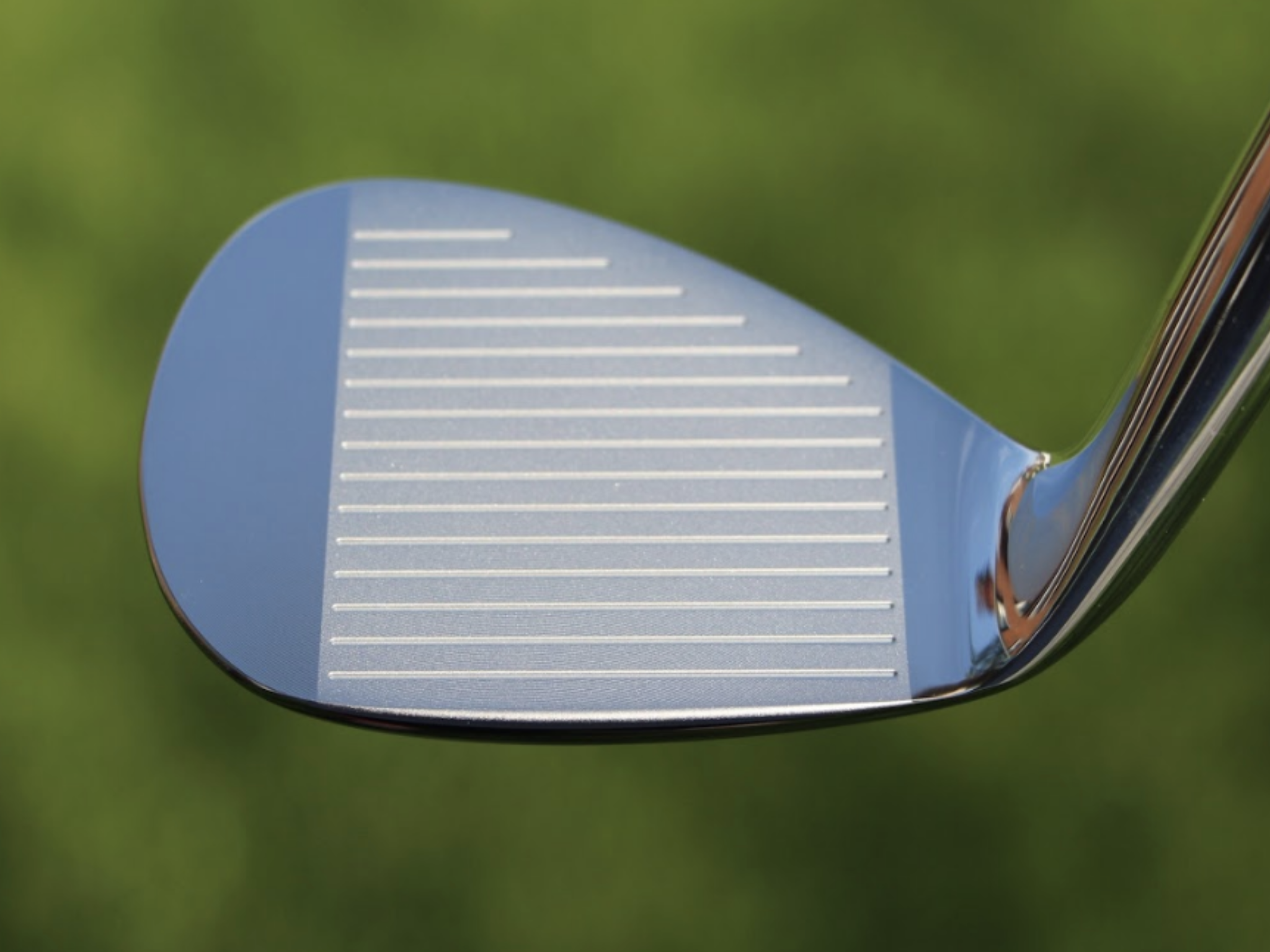
Of all the clubs in our bags, wedges are almost always the simplest in construction and, therefore, the easiest to analyze what might make one work differently from another if you know what to look for.
Wedges are a lot less mysterious than drivers, of course, as the major brands are working with a lot of “pixie dust” inside these modern marvels. That’s carrying over more to irons now, with so many new models featuring internal multi-material technologies, and almost all of them having a “badge” or insert in the back to allow more complex graphics while hiding the actual distribution of mass.
But when it comes to wedges, most on the market today are still single pieces of molded steel, either cast or forged into that shape. So, if you look closely at where the mass is distributed, it’s pretty clear how that wedge is going to perform.
To start, because of their wider soles, the majority of the mass of almost any wedge is along the bottom third of the clubhead. So, the best wedge shots are always those hit between the 2nd and 5th grooves so that more mass is directly behind that impact. Elite tour professionals practice incessantly to learn to do that consistently, wearing out a spot about the size of a penny right there. If impact moves higher than that, the face is dramatically thinner, so smash factor is compromised significantly, which reduces the overall distance the ball will fly.
Every one of us, tour players included, knows that maddening shot that we feel a bit high on the face and it doesn’t go anywhere, it’s not your fault.
If your wedges show a wear pattern the size of a silver dollar, and centered above the 3rd or 4th groove, you are not getting anywhere near the same performance from shot to shot. Robot testing proves impact even two to three grooves higher in the face can cause distance loss of up to 35 to 55 feet with modern ‘tour design’ wedges.
In addition, as impact moves above the center of mass, the golf club principle of gear effect causes the ball to fly higher with less spin. Think of modern drivers for a minute. The “holy grail” of driving is high launch and low spin, and the driver engineers are pulling out all stops to get the mass as low in the clubhead as possible to optimize this combination.
Where is all the mass in your wedges? Low. So, disregarding the higher lofts, wedges “want” to launch the ball high with low spin – exactly the opposite of what good wedge play requires penetrating ball flight with high spin.
While almost all major brand wedges have begun putting a tiny bit more thickness in the top portion of the clubhead, conventional and modern ‘tour design’ wedges perform pretty much like they always have. Elite players learn to hit those crisp, spinny penetrating wedge shots by spending lots of practice time learning to consistently make contact low in the face.
So, what about grooves and face texture?
Grooves on any club can only do so much, and no one has any material advantage here. The USGA tightly defines what we manufacturers can do with grooves and face texture, and modern manufacturing techniques allow all of us to push those limits ever closer. And we all do. End of story.
Then there’s the topic of bounce and grinds, the most complex and confusing part of the wedge formula. Many top brands offer a complex array of sole configurations, all of them admittedly specialized to a particular kind of lie or turf conditions, and/or a particular divot pattern.
But if you don’t play the same turf all the time, and make the same size divot on every swing, how would you ever figure this out?
The only way is to take any wedge you are considering and play it a few rounds, hitting all the shots you face and observing the results. There’s simply no other way.
So, hopefully this will inspire a lively conversation in our comments section, and I’ll chime in to answer any questions you might have.
And next week, I’ll dive into the rest of the wedge formula. Yes, shafts, grips and specifications are essential, too.
- LIKE32
- LEGIT7
- WOW1
- LOL1
- IDHT2
- FLOP3
- OB1
- SHANK3
-

 19th Hole2 weeks ago
19th Hole2 weeks agoDave Portnoy places monstrous outright bet for the 2024 Masters
-

 19th Hole2 weeks ago
19th Hole2 weeks agoTiger Woods arrives at 2024 Masters equipped with a putter that may surprise you
-

 19th Hole1 day ago
19th Hole1 day ago‘Absolutely crazy’ – Major champ lays into Patrick Cantlay over his decision on final hole of RBC Heritage
-

 19th Hole3 weeks ago
19th Hole3 weeks agoReport: Tiger Woods has ‘eliminated sex’ in preparation for the 2024 Masters
-

 19th Hole1 week ago
19th Hole1 week agoTwo star names reportedly blanked Jon Rahm all week at the Masters
-

 19th Hole1 week ago
19th Hole1 week agoReport: LIV Golf identifies latest star name they hope to sign to breakaway tour
-

 19th Hole1 week ago
19th Hole1 week agoNeal Shipley presser ends in awkward fashion after reporter claims Tiger handed him note on 8th fairway
-

 19th Hole1 day ago
19th Hole1 day agoJustin Thomas on the equipment choice of Scottie Scheffler that he thinks is ‘weird’






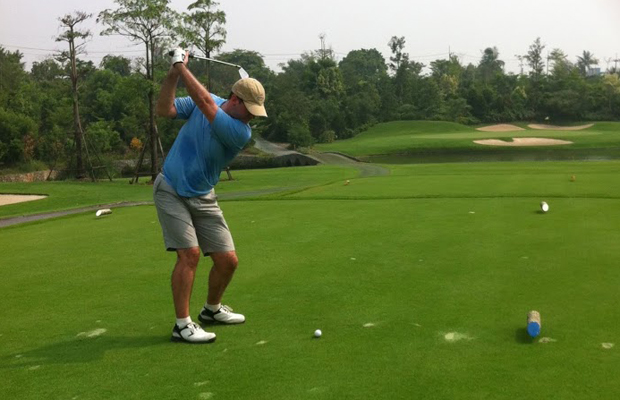

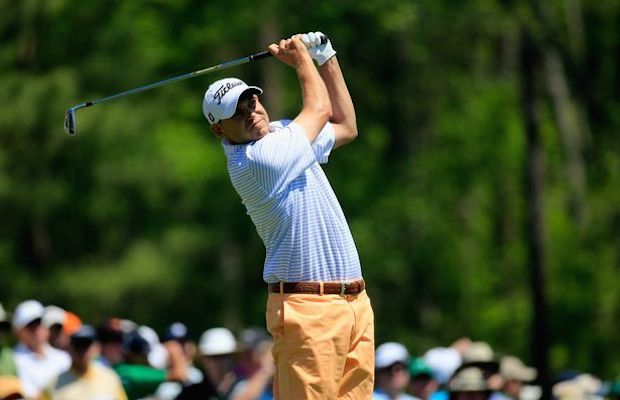
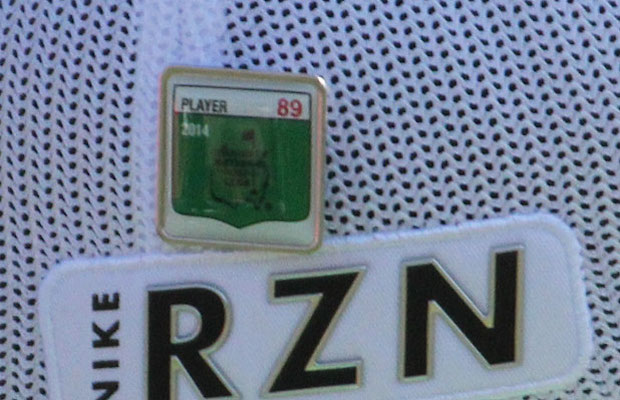




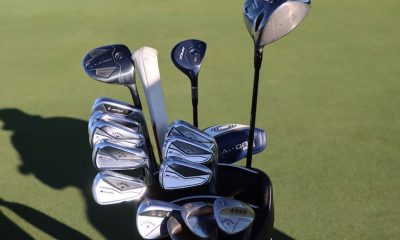

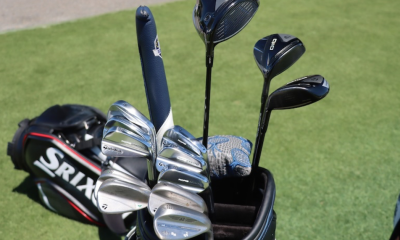



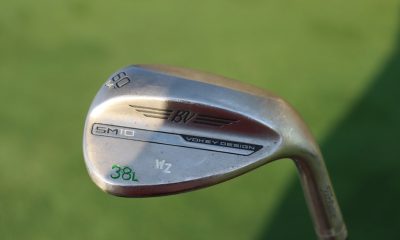

Dino
Apr 17, 2013 at 10:16 am
this is wrong. the committee does not nor has to remind players of thier penalties for breaching a rule or of any shot resulting in a penalty stroke prior to handing in thier cards. That is not thier job. Had they noted from the begining that Tigers drop was illegal they do not have to tell him prior to card signing. He simply would have been disqualified for handing in the wrong card. And wether or not Tiger knew the rule or not also does not matter. It is is his 100% resonsibility to know the rules and to play by them. This is not the same as what happened to P. Harrington becaues he did not know his ball moved but he still played by the rules. There is a big difference. Tiger (ignorant or not of the rule) did not play by the rules. They cannot dismiss the disqualification if they are going to penalize him for the play. They must do both or do nothing at all and say we missed it an its too late, its over. They should not acknowledge the penalty without acknowledging the wrong card. This notion that they missed it at first is not an excuse to excuse the disqualificatiopn because they do not have to discuss it with tiger prior to card signing anyway. That is not what they do. If a player hit a ball into water and hands in a card without penalty stroke he is disqualified. Its the same thing. They do not remind or tell players prior to signing who lost a ball in the woods or hit into water or whatever that they must add those strokes. They simply check the card against such and if it is wrong they are disqualified. They cant simply dismiss one and not the other because they go hand in hand. And cant dismiss it simply because they missed it. they should iether accpet it all and say they screwed up and its too late or penalize for both. Thats the only two ways which they should handle it. As said, totaly different from Harrington because he didnt know the ball moved or if a player double hits and doesnt know it. Harrington or other players in such situation still played by the rules. Tiger did not play by the rules and not knowing the rules is never an escuse. Whats to stop players from now doing things and pleating they didnt know the rule? they are using the right to waive for the wrong reason and unfairly applying it. They should have said. he handed in his card, we accepted his card and we screwed up so its over thats the breaks. But to acknowledge the penalty later on and also assess it as such they must also assess the disqualification. They cannot use the excuse they missed it for one penalty and not the other. They iether missed both which they did and decide to penalize for both or they should have done nothingdo nothing. There is no such thing to warrant an inbetween. It did not have to be discussed with tiger at all had they cought it earlier so thier notion that thats thier fault does not fly. If thats the case then penalize him for nothing. But shoulodnt do one without the other.
Gene
Apr 15, 2013 at 7:38 pm
Tiger and the Masters lost their integrity. There is no way they DQ Tiger because they lose their tv ratings. Any other player in field would have have been DQ. And dont tell me Tiger doesnt know the rules. He would cheat to win another major and he just proved it and the Masters proved they are willing to over look the rules and give preferential treatment to Tiger Woods.
Steve
Apr 16, 2013 at 1:06 pm
Lol. If he was cheating on purpose, he wouldn’t be stupid enough to admit it later. Especially after the rules committee watched the video and said nothing was wrong with the drop. If he actually was a cheater, he would have gone forward without saying anything and not get punished at all.
Ty
Apr 15, 2013 at 12:58 pm
so, the third option for a drop from this type of hazard is:
3.Drop a ball behind the water hazard, keeping the point at which the original ball last crossed the margin of the water hazard directly between the hole and the spot on which the ball is dropped, with no limit to how far behind the water hazard the ball may be dropped.
Tiger’s drop was behind the hazard, the poing at which the ball crossed the hazard was between the hole and his drop point, and he droped the ball farther back from the original shot. The rules state that there is NO distant limit to how far back you can play your drop. So if anything I think Tiger is guilty of confusion between the 3rd and 4th option allowed by the rules.
Ty
Apr 15, 2013 at 12:53 pm
This one falls on the Rules Committee. After the caller notified them of the potential infraction, they should have not only reviewed the tape themselves but also notified Tiger in the scorer’s tent before he signed his card. Had they done this, Tiger would have admitted his mistake, signed for the correct score and all of this would be a non-issue.
Clark
Apr 15, 2013 at 11:40 am
Maybe Tiger should be able to see instant replay from last shot. Haha
Joe C.
Apr 14, 2013 at 6:17 pm
Kind of late to be jumping into the Tiger Wood’s controversy but …… When Tiger signed his score card, wasn’t it an incorrect score card? Does the fact that he did not asses himself a penalty mean that his score was correct on the card? This is where I am confused.
TWShoot67
Apr 14, 2013 at 8:06 pm
At the time Tiger signed the scorecard NO. No one who was at the event said anything about it before he signed his card. When a rules official (and its their job) thinks there’s a rule infraction he will in fact talk to the player ie…. just like they talked to the 14 year old Tianlang Guan after they clocked him for slow play. When they it got brought up about Tiger possibly braking a rule they said he didn’t that it looked like the drop was proper. No one really knows how far he actually dropped the ball until an interview with tiger where he stated it was 2 yards longer shot. well when I watched him drop and seen the replay it didn’t look 2 yards but that what he said he did. The rule as been explained over and over but the Tiger haters or so called PGA pro’s who say the older pro’s like JACK would have just DQ themselves. Tiger has been cheating for years, thats why he has the wins he has…. pure cheater.
char005
Apr 15, 2013 at 11:17 am
name one other instance. this should thread should just be i like tiger or i hate tiger.
Bob S
Apr 14, 2013 at 5:43 pm
Well….at least they have an official w/Snedeker and Cabrera when they needed ’em…..
Alex
Apr 14, 2013 at 2:24 pm
Trying to argue that a pro should know all the rules is like saying that a business owner should be familiar with the legion of laws and practices regarding taxes, statues, etc. I’m never going to buy that one.
Sorry, but it’s easy to “remember” everything at home watching on TV.
TWShoot67
Apr 14, 2013 at 6:21 pm
Great answer Alex.
oilfield7550
Apr 14, 2013 at 11:27 am
Hmmm…seems as though the Masters rules committee called Eric Holder before rendering their decision.
Brian
Apr 14, 2013 at 10:49 am
If the rules of golf intended for someone to be DQ’d for failing to execute a proper drop, they would not have the rule imposing a strict 2-stroke penalty! If Tiger intentionally violated the rule (i.e., cheated), there would be grounds to DQ him. The evidence does not suggest this as he voluntarily explained the improper drop. As a result, the evidence suggests that he had no knowledge of the error until after he signed his card. While this would have resulted in immediate DQ in the past, that has changed with the new rule. The conspiracy theorists are nuts if they believe this rule was created for Tiger, as will be shown in time as others reap the benefit of the new rule.
JeffMac
Apr 14, 2013 at 10:49 am
Grant has quoted the rules correctly, but some others in this discussion have not. The rules do NOT state that a player is to “drop” his ball as near as possible to where the previous stroke was made. He is to “play” his ball as nearly as possible from where the previous stroke was made.
If a player was allowed to place his ball, obviously he could place it in the exact spot where the prior stroke was made (in this case, the divot left behind). But you can’t place – you are required to drop the ball.
I believe Tiger was on a down slope, and so it would make sense to me that a player would drop his ball some distance behind where the original stroke was made, so that if it rolled towards the hole, it has a chance of not rolling nearer the hole then where prior stroke was made (which would require a re-drop).
In addition, the ball cannot roll more then 2 club lengths (2 yards?) from where it first hits the ground. So it makes sense to me that dropping 2 club lengths behind, when on a downslope, is your best chance to have your first drop be a legal drop and have the ball in play without having to re-drop.
I think Tiger knows the rules, and the above is what was going through his mind when dropping. True, he may have been hoping the ball did not roll, or did not roll much, so he could play from a slightly further distance then previous. And sharing that thought process was his downfall that caused the penalty.
It almost seems like he should have tried to drop his ball into his divot, and if he missed the divot, or if the ball rolled or bounced out of the divot, then re-drop. If it happens again, then place the ball in the divot.
That is the only way to indisputably play your stroke from as near as possible to where prior stroke was played.
Anything else is subjective.
Larry
Apr 14, 2013 at 9:44 am
No,No,NoThe rules committtee knew exactly what happened. They tried to ignore it until ESPN told them about the interview. Then they had no choice. Tiger knew the rules and he thinks he is above them. He knows they all want him there to bring in the ratings but once there was no way out they had to work something out. All the other golfers and critics who called for Tiger to withdraw knows what was going on. Anyway you are right about one thing you can’t blame Tiger because the media has made him believe that he is above everyone and should not have to account for his actions on or off the golf course.
jake
Apr 14, 2013 at 10:48 am
Larry I am inclined to agree with you. I think that is exactly what happened. This isnt the first tine he has taken a funny drop. As someone who has played professionally I can tell you it does not sit well with other professionals when stuff like this happens, the worst thing you can have as a professional is to have a cloud of “gray” attached to your name.
Woodie
Apr 14, 2013 at 12:26 pm
Once there was this nice drop of a parking lot… which was out of bounds till then 😉
Jack
Apr 14, 2013 at 3:20 am
This really changes everything. I don’t like how they can go back and change what was approved and signed for in the name of making it right. To me there were many opportunities to make it right, but that time had passed.
sam
Apr 14, 2013 at 12:40 am
Rule requires you drop at spot as near as possible to prior spot. He knew he didn’t do that when he admitted he took it back two yards to a more favorable spot to hit his next shot. Rule does not provide you can take it as far back as you want. Committee or no committee it is a game of honor and if the committee didn’t dq him he had the moral obligation to withdraw. Aside from having a rules official with each group they should probably let players have their lawyers with them.
jake
Apr 14, 2013 at 7:59 am
Thank You
Woodie
Apr 14, 2013 at 12:23 pm
well said, Sam. Thank you!
J
Apr 13, 2013 at 11:13 pm
Yet again, people making comments without the skill most kindergarten children posess.
READ THE ARTICLE
Tiger was told, by the rules committee, that his drop was legal.
Read it.
The rules committee changed its mind.
Read it.
They assessed him a penalty as described in the rules and proceeded to follow the rules even farther by not DQ’ing him but waiving the DQ because… Now get ready… Here it comes… The reading part…
They told him his drop was correct. They changed their mind. They waived the DQ.
READ before you comment. You look stupid when you speak from a point of emotion, with some sort of weird, obsessive dislike of someone you’ve never met or interacted with, rather than speaking from a point of educated information and the benefit of all the information available. And… Here’s the best part..
Augusta… The Masters… It’s an invitational. They make the rules. It’s their Tournament… They can say everyone uses pink balls and croquet mallets for putters… The PGA Tour rules… The USGA.. The R&A.. All of their rules…ALL OF THEM… Are irrelevant. Augusta makes em…breaks em…enforces em… All of you crying foul because of the rules are speaking from a point of ignorance. The rules are what AGNC says they are… They spoke. SU.
Greg DeLaney
Apr 13, 2013 at 10:58 pm
For the signing the incorrect scorecard argument: Tiger didn’t knowingly sign a wrong scorecard, and when it was signed, the rules committee had determined it was the right scorecard. So Tiger obviously didn’t knowingly sign a wrong card. After the interview it was determined he broke the rule, he admitted he did this after the rule was further explained to him, and he was assessed the 2 stroke penalty, as the new rule states. Everything was followed by the book. Any other player would get the same treatment. This wouldn’t happen to any other player tho, because every single shot of Tiger’s is on TV therefore he probably follows the rules by the book more than any other golfer out there because he was more closely watched.
Greg DeLaney
Apr 13, 2013 at 10:52 pm
Nicely put Grant! Who on here really believes he should have been DQ’ed? He obviously didn’t know the rule, or at least the full rule, but within 5 feet is close enough anyways. And he hit the pin on the shot he was retaking anyways. Y’all that think he should have been DQ’ed are haters. Committee made the mistake, not Tiger. If anything Tiger should be commended for tattling on himself and taking the 2 stroke penalty. If he doesn’t say anything, all this is mute. 2 stroke penalty was more than fair. Hope he can make a nice run tomorrow. And anybody would get this treatment, but I don’t think any other golfer has enough haters who look up a rule such as this in the rule book and takes the time to call it in. LOL get a life. Probably one of you haters on here hating on Grant.
jake
Apr 13, 2013 at 11:52 pm
There is no “close enough anyways”…..he broke a rule.
Jeff
Apr 13, 2013 at 9:18 pm
I find it interesting that ALL of this hand-wringing about who-knew-what-when began LONG AFTER the fact. None of his playing partners or caddie said, “Hey, wait a minute” either as he dropped or after the shot. None of the announcers calling the play-by-play at the time recognized a problem. None of the folks watching with me noticed it. And most important, none of the officials, until notified by fans watching TV (something I’m not fond of, by the way.) So now all of a sudden everyone is an expert on what happened and what Tiger should do or should have done. If he was trying to cheat, I’m pretty sure he’s smart enough not to yap to the press about how he tried to illegally gain an advantage. I see it as an honest mistake that in retrospect makes US ALL look a little foolish, most of all Mr. Woods, but one that has been ruled on and…play on, Tiger.
Don
Apr 13, 2013 at 9:17 pm
This ruling is comical….Anyone defending not DQing tiger is either 1)a huge fan of tiger (so I understand) 2)doesn’t believe in DQs for
sometimes lame golf rules which can be understandable, see Dustin Johnson at the PGA or 3)can’t understand the rules (or is a CBS tv exec).
The rule is pretty simple, especially when you read the examples. Basically the rules are set up to protect someone from DQ when he doesnt REASONABLY know that he DID SOMETHING that caused him to break the rules. It does not matter if he knew he broke the rules or not, only if he knows that he did the act (which is prohibited).
So in this case, if there were a bunch of divot marks around the area he hit from, and he dropped next to a divot where he thought he hit from previously, he would be saved. However, misinterpreting a rule is not a defense….
Greg DeLaney
Apr 13, 2013 at 11:01 pm
it was pretty reasonable that he misinterpreted the rules since he tattled on himself in his own after round interview there Elin. So by the rules he didn’t have to be DQ’ed just like the rule was put in place for. It’s too protect the players
J
Apr 13, 2013 at 11:19 pm
He didn’t break the rules. ANGC spoke. It’s their tournament… How is it absolutely so few of the people posting comments fail to understand the basic facts…
Augusta makes the rules. It’s an invitational.
They make the rules. ALL of the other rules are subject to…. Ready for it…. Wait for it…. Wait for it….
LOCAL RULES.
You don’t like it… Fine. But the rules were enforced the way AGNC wanted them enforced. Which means… Here it comes again….ready….
LOCAL RULES supercede those of the PGA… The R&A… The USGA… Their rules stop at the gate.
jake
Apr 13, 2013 at 11:45 pm
Local rules do not supercede USGA rules they have to be formed with USGA approval. Rule 33-8
J
Apr 14, 2013 at 2:16 am
Wrong.
It’s an Invitatinal. The USGA has no authority over an Invitational tournament. Period.
jake
Apr 14, 2013 at 7:57 am
UH-Hello–They play by USGA rules.
TWShoot67
Apr 14, 2013 at 6:19 pm
Thank you , explain that to Woodie a PGA professional.
Woodie
Apr 15, 2013 at 4:31 am
Thanks TWshoot. Everything is said, I will not reply any further here. Guys like you are not seeing the facts, but ok. Play what you like, it is not Golf.
Metrybill
Apr 20, 2013 at 7:42 pm
misinterpreting a rule is not a defense.
EXACTLY.
jake
Apr 13, 2013 at 8:48 pm
What I can’t believe is that the rules committee, after reviewing, ruled that what he did was ok! Mind you they had a forner USGA President and Mark Russell, a well respected official that has officiated on the PGA Tour for years. Forget all the other stuff that happened after… That where it starts getting funky for me.
Troy Vayanos
Apr 13, 2013 at 8:22 pm
Well said Grant,
The rules committee need to take full responsibility for what happened. Tiger was doing as he was told and has every right to continue playing.
If he goes on to win, hopefully this incident will not overshadow his victory.
Steve
Apr 13, 2013 at 5:15 pm
I wish I could call the NBA and tell them that LeBron didn’t actually get fouled, it was a flop, so he shouldn’t get free throws.
Marc
Apr 13, 2013 at 9:23 pm
I think this is getting ridiculous about having people call, tweet, or whatever to the officials and then have them change their decision. The official needs to make the call, then you live with the result. I agree that Tiger should have been DQ’d, but all sports have officials that make bad decisions. We complain, and say “what if” – but the fact is, it’s getting to the point where the rules are being enforced differently based upon input from the TV audience. This is pretty ridiculous IMHO. What’s next? Are they going to start posting a phone number or email address at the bottom of the TV screen for us to send in our rules alerts and just make it part of the game?
Ty Woodruff
Apr 13, 2013 at 4:06 pm
I’ve never attended a Rules seminar, but even I know dropping 6 ft from the original position isn’t “as near as possible”. Wondering if the original ruling isn’t the one that should come into question as favoritism. Committee should have assessed a penalty to begin with…before Tigger signed his card.
nick baker
Apr 13, 2013 at 4:04 pm
Agree up to a point, and that point is the news conference, when TW stated that he dropped at a different location for benefit. This statement undermines the logic of the Rules Cte. Unless TW or the Rules Cte has good reason to believe that TW mis-spoke in his news conference, it is DQ in my opinion. Without the news conference the Rules Cte is entitled to make their own determination, but not when TW is on tape saying this.
Kenneth Atkin
Apr 13, 2013 at 4:00 pm
I want to add that I feel it is sad that the new rule is being used to justify a player violating the rules (admittedly) and then signing an incorrect scorecard (admittedly) and being allowed to play for the green jacket. This is not what the new rule was aimed at. This is much different than a ball moving an 1/8th of an inch without the player knowing. Tiger SHOULD have known he violated a rule. Plain and simple.
Andrew Sellitti
Apr 13, 2013 at 9:23 pm
That is my point as well. The spirit of this rule change was to protect players where they couldn’t protect themselves. Ignorance of the most basic rules is not a situation of a player not being able to protect themselves. The application of the rule sets a dangerous precedent going forward. The game of golf on the pro level will move further away from a self policing game of integrity and now into a sport where officials manage all the rules.
Bern
Apr 13, 2013 at 10:22 pm
The scorecard was in fact not incorrect when Tiger signed it. It was not incorrect until the committee decided that drop was improper. Nobody on the course seemed to think the drop was improper when Tiger made it. The commentators said nothing. The rules folks said nothing. The other players said nothing and Tiger thought he had taken a proper drop. This is nothing but that same old mess from the same tired voices that have found fault with Tiger from day one. The same kind of folks who called in threats on his life in 1997. Same folks. Same agenda. The committee made its ruling and that should be it. Move on.
Brent Ashcroft
Apr 13, 2013 at 3:37 pm
I do blame the rules committee as well as Tiger Woods. If any other player would have been caught trying to give them selves an advantage they would have been dq’d. Everything in golf is not about tiger and you people need to realize he’s not God.
Blanco
Apr 13, 2013 at 6:57 pm
Nobody thinks he’s God dude. Just a mortal human being on the path to total knowledge of self– he’s also a phenomenal golfer– probably the best there ever was. This social media thing is getting more and more manic depressive every day. Journalism and enlightened discussion is long dead.
Kenneth Atkin
Apr 13, 2013 at 3:33 pm
So is the Committee now going to keep score? Why even have players sign their cards in this day and age? Just one more reason that professional golf and recreational golf have nothing in common.
Mikko U
Apr 13, 2013 at 3:29 pm
So why is it ok not to know even the most basic rules of golf and break them?
Tiger made a mistake (or cheated), then the committee makes an uninformed decision, Tiger reveals his mistake to the media, the committee doesn’t hand out the required penalty of disqualification.
Or how does a basic water hazard rule become something professional players shouldn’t or needn’t be aware of?
Woodie
Apr 13, 2013 at 6:58 pm
Right, Mikko!
Sorry Grant, but as a Professional you should know better!
“He proceeded under the rules to the best of his knowledge,…”
Tiger did not know one of the easiest rules in golf, come on! He signed a wrong scorecard. It doesn’t matter what the guys from the rules comittee recognized or did not recognize. Any player is responsible for playing under the same rules as any other player in the tournament.
Grant Shafranski
Apr 13, 2013 at 10:14 pm
Thank you for the comment Woodie. I absolutely agree that Tiger should know the rule, and I’m sure that he does. Keep in mind that knowing the rules and proceeding under them are two completely different things, however. The most difficult thing about the Rules of Golf is interpreting their meaning.
I believe that Tiger was flustered at the time he took the drop, and did not think about the point at which his ball LAST crossed the margin (opposite side). I think he was only thinking about when his ball first crossed, and went back on a line with THAT point between himself and the hole. Therefore, in his mind he was proceeding correctly, and not intentionally breaking any rules.
At the club level, the golf professional often times is the “committee” and we cannot expect every participant in the field to know every rule. The same goes at the professional level, you would be surprised how many tour pros struggle with the rules, even though they are playing the game for a living.
Had Tiger said in his interview that he was knowling breaking Rule 26-1 when he dropped his ball, it would be a completely different story. It would then become a possible serious breach, for which the committee could decide to DQ him for. But as the committee, all we can do it trust that the player is telling the truth, just as the Masters committee has to believe Tiger when he says that he thought he was proceeding correctly.
MLamar
Apr 14, 2013 at 10:53 pm
Great Post … People need to take their emotions out of the situation and review the facts … As I’ve played in my Club Chmps – we have a committee – if there’s a question about a ruling – we play on – right the score and the committee will discuss/review with us when we get into the club house – Penalty will be assessed or not … The rules AGNC committee initially deemed no foul and later reviewed & assessed a 2stroke penalty – PLAY ON !!!
Betcha dimes/donuts – I don’t think everyone (even tour players) know all the rules. ie They’re open for interpretation.
Metrybill
Apr 20, 2013 at 7:41 pm
I like the article, but …
Ignorance of the law (rules) is no excuse. I do not care that he was “flustered.” So what? That is at best an explanation; but it is no excuse. There is no “fluster” exception to the rules. He violated a very, very basic rule. He had a caddie, too; which most of us cannot afford or claim. 4 eyes and 2 brains; not just 2 and 1. All the worse, he in fact admitted that he intentionally played from farther back than the rule permits. He did something that the rules committee did not know about! He had 4 options and he took none of them. Intent has no place in the rules for a proper drop. You either dropped the ball correctly or you did not. He didn’t get an official ruling during the round, only afterwards and even then not one generated by him or by a committee with full knowledge of the facts.
btw, and importantly, there was a rules official available and TW did not take advantage of that. All he had to to was to ask, “Can I do this? (or) Is this OK?” In a club tournament he gets d’q’d.
Another option: in case of doubt under the rules he could have played a 2nd ball.
Golf is not a regular ball-sport. Golfers are self-regulating. Officials do not throw flags during the round. Golf officials are not active, flag-throwing officials. {Still I do not get that the rules official did not “check out” the drop to protect the field. If he/she had this affirmative duty, this might not have come up. Now, if rules officials had that “duty,” I would have a different opinion.}
Full disclosure: Clearly, Tiger is one of the very best ever. I am not a Tiger fan but I don’t hate him or wish him failure. Tiger has benefited from the lack of a full field of future Hall-of-Famers in his era, except for Mickeleson and Els. If I could get a bet on Tiger v. Tom Watson, 1-shot a side, I would take Watson. (I know; ridiculous but that is how I feel about it.) Tiger has never come from even 1-shot behind to win a major. IMO, that is a serious hole in his resume’ when compared to others.
Tiger is about Tiger and no one else. He is known to be smart and analytical. I am sympathetic but not to the point that the rules are compromised. I do think this was favoritism; maybe not intentionally so, but as applied.
Tiger is without a doubt the best round 1 -3 player ever. As a 4th round player, who absolutely WILL be and deserves to be a hall-of-famer, as a 4th round player he will probably go down as one of the most mediocre of them all. That will be the hole in his resume’.
btw, again. Most of us play without “drop-zones.” Pros are privileged with the best of everything when they play.
Looking forward to the comments and prove me wrong. Is there some context that I am missing?
Metrybill
Greg DeLaney
Apr 13, 2013 at 10:53 pm
You keep talking about playing by the rules but Tiger followed the rules set forth by the governing body of golf. Stop being a hypocrite. The game of golf changed this rule. Grant is a professional and does know better you stupid idiot
Woodie
Apr 14, 2013 at 6:03 am
Oh Greg, are we getting personal? I won’t jump on your verbal abuse…
I am a PGA Professional too and I know what I talk about! Signing a wrong scorecard is a DQ, period.
Tiger should have amditted that he made a mistake and pull out of the Masters. And I am no Tiger hater…
Mikko U
Apr 14, 2013 at 9:13 am
I’m sorry but he did not follow the rules set forth by the governing body of golf. He himself said he went back a couple of yards to drop the ball (thus he knew where he shot his original shot) and that is not dropping as near as possible.
Ronald Montesano
Apr 13, 2013 at 3:23 pm
Nicely put, Grant. While I believe that my take is the correct one, and that the Competition Committee enabled Tiger in a way that they would no other player, I applaud your research and your formulation of your argument.
TWShoot67
Apr 14, 2013 at 6:14 pm
There is no argument. they are the facts Ronald. Tiger followed the rules of golf plain and simple. he didn’t need to withdraw because haters want him to, if in fact he did he would do the rules an injustice. When Tiger dropped he didn’t think he was gaining any advantage. if he wanted to cheat he would cheat but since he has 77 wins and 14 majors Tiger doesn’t need to cheat. He’s the greatest golfer of our time and maybe of all time.
John
Apr 14, 2013 at 11:16 pm
Well he didn’t end up winning. Well Done Adam Scott